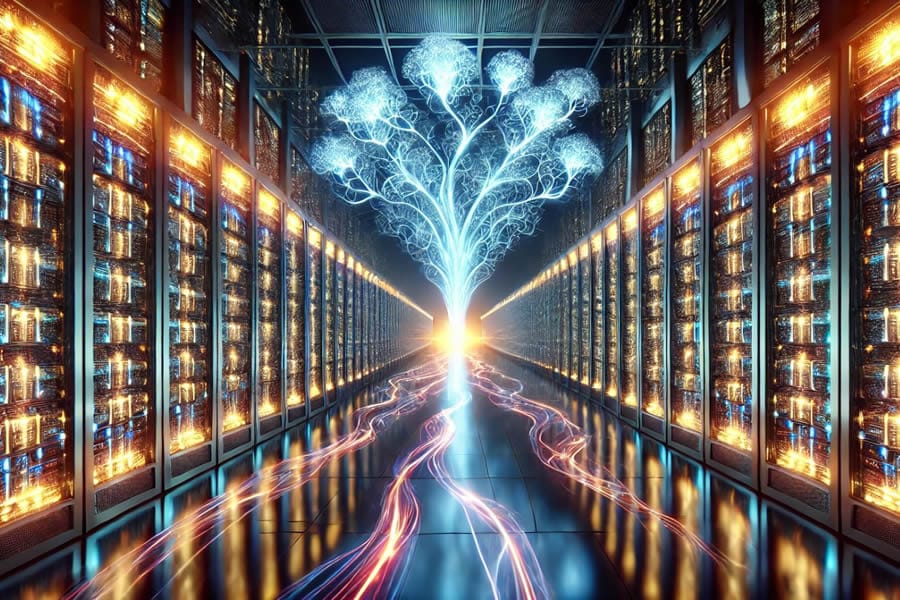Data centres are the unsung heroes of our digital lives, powering everything from your morning news scroll to complex business operations. But this essential infrastructure comes with a significant energy footprint. Recent headlines, including concerns over a proposed AI data centre in Lincolnshire that could emit five times the emissions of Birmingham Airport, highlight a crucial conversation: why do data centres consume so much energy, and why is AI set to supercharge this demand?
At their heart, data centres are vast, highly efficient machines designed to process, store, and transmit data 24/7. Their energy consumption primarily stems from three critical areas:
IT Equipment (Servers, Storage, Networking): These are the workhorses, running non-stop to handle the immense flow of digital information. Every calculation and every data transfer requires electricity.
Cooling Systems: IT equipment generates significant heat. To prevent overheating and ensure optimal performance and longevity, sophisticated cooling systems (like air conditioning and water-cooling) are essential. This often accounts for a substantial portion of a data centre’s energy bill.
Power Infrastructure: Uninterruptible Power Supplies (UPS), power distribution units, and backup generators all consume energy to maintain resilience and ensure continuous operation.
In the UK, data centres already account for a notable share of the nation’s electricity use, estimated around 2.5% of total consumption, with projections to rise to 6% by 2030 (CBRE).
The AI Energy Surge: A New Frontier
While traditional data centres are energy-intensive, Artificial Intelligence (AI) takes consumption to an entirely new level. The growing demand for AI is projected to dramatically increase data centre electricity needs worldwide, potentially doubling within five years, consuming as much as Japan’s entire electricity consumption by 2030 (IEA).
Why the massive increase for AI?
Intensive Training: Training complex AI models (like large language models) requires immense computational power, running sophisticated algorithms on vast datasets for extended periods. This process is incredibly energy-hungry.
Specialised Hardware: AI often relies on powerful Graphics Processing Units (GPUs) and other specialised hardware, which are designed for parallel processing but also consume significantly more power than standard CPUs.
Continuous Inference: Even after training, running AI models for day-to-day tasks (inference) like image recognition or predictive analytics is still energy-intensive, especially at scale.
Looking ahead, data centres are set to become even more critical for UK businesses of all sizes. The digital transformation sweeping across industries means that reliable, secure, and high-performance IT infrastructure is no longer a luxury but a fundamental requirement for success and competitiveness.
Call us on 0161 464 6101 or email hello@datacentreplus.co.uk to see how we can assist you too. You can also head to our website to find out more.
#2025 #DCP #DataCentre #AI #Technology #Sustainability
DCP Lands At The Hive With New Partnership
The Hive, operated by social enterprise Upturn, is a business hub in the heart of Oldham – the town in which our CEO and founder

